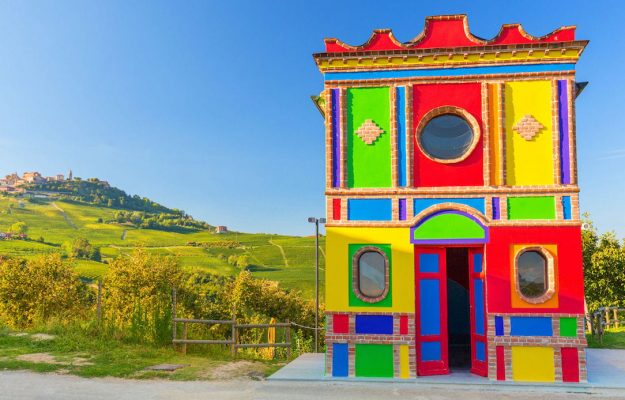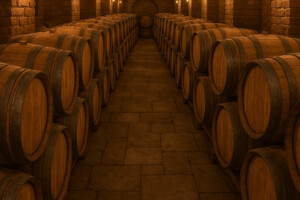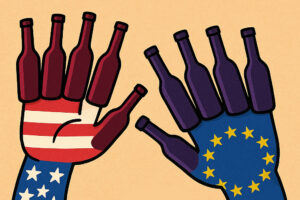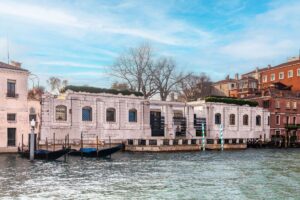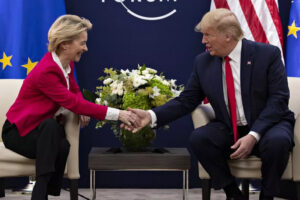The return in the yellow zone of a good part of Italy corresponds to the reopening of wineries to wine lovers in many wine territories. Of course, February is not historically a fundamental period in terms of wine tourism, but there is a great desire to start again, especially to build the basis of the high season. With two objectives, more or less stated, but implicitly shared by all: to return to work, even in the reception, with continuity from Easter, hypothetical deadline for a reopening of free movement between regions, and welcome foreign tourists, if the international health situation will allow, in the second half of the year. With the knowledge that for now reigns largely uncertainty, and that the performance of the vaccination campaign will have an enormous specific weight in directing, in one way or another, the long-awaited return to normality. So, WineNews, producers and presidents of consortia of some of the most representative of the Belpaese wine.
From Montalcino, the president of the Consorzio del Brunello, Fabrizio Bindocci, cools down enthusiasm, recalling how it is still a fragile situation, in which “everything depends on the color of the single Regions, and, as of today, with all the gatherings that were registered over the weekend, there is the risk of returning to the orange zone. Looking to the future, if we take last year's summer boom as an example, the prospects are better. Instead of foreign tourism, we had an Italian one, which allowed the operators of the territory to work hard and well. To date, forecasts are difficult to make in this perspective, there are still variables to be measured, such as the performance of the vaccination campaign and the reopening of air corridors, but I am confident that in the long run things will go well. It would be nice to get going again at Easter, but every week you have to watch out for the infection curve. On the one hand, there is the need to give oxygen to the restaurant and hotel business, but it takes little to upset the plans, think of the delay on vaccinations, which is slowing the return to normal”.
Not far away, among the vineyards of Nobile di Montepulciano, “The Municipality, Strada vino Nobile and Consorzio - says President Andrea Rossi - are working together to bring Italian and European tourists to Montepulciano even in this still very uncertain and complex 2021. Wine tourism is certainly fundamental for territories such as ours, let's keep in mind that 1 bottle out of 4 is sold here, and 1 out of 5 directly in the winery, therefore the local market is very important and very connected to tourism. Thinking about the new season is mandatory, but it is also important not to delude ourselves, the real season of wine tourism could start again from April 2022, when vaccines will be more common and it will be more likely that we will be able to travel around the world again with more ease”.
In Piedmont, Filippo Mobrici, head of the Barbera Consortium, preaches patience, but without extinguishing a certain enthusiasm. “We have to play the card we have well, the yellow zone, which allows us to reopen some activities. It takes patience and responsibility, but it allows us to at least have some local tourism: for us, Turin, as well as other cities in Piedmont, is a great reservoir. Knowing that the restaurants have reopened, people are happy to come back and visit the companies. Which, on the other hand, need to restart, in harmony and synergy with the agritourisms, often linked to the companies”.
Good news also from an economic point of view, because the objective of wineries today is to “recover in value. Wine is sold, especially in large-scale distribution, but the greatest added value is in the on-trade and in direct visits. The tourist, who comes to the territory, eats, drinks and buys bottles. I hope that at Easter the signals will start to become permanent, the intermittence is very difficult to manage, between tight schedules, employees and constantly changing dynamics. Spring offers a chance to live outside, with more awareness and in hopes that vaccines will do their part. I still think 15 days of lockdown is better than opening to close, though. Wine tourism is an industry that we miss, 1.5 million people a year who bring enormous wealth to the area, not only to producers. To say we are optimistic is maybe too much, the solution is not around the corner, and the Government's measures do not satisfy us at all. Wine, especially in Piedmont, where it represents a value of 2 billion euros, deserves more attention and respect, if the wine is doing well, the territory is doing well. We are talking about quality tourism, young and with a great spending capacity. We do not want help, but at least the recognition of our role, we are very resilient, we are content, but we can not pull for long. I hope the Government and the Regions, in the Recovery Plan, will dedicate a chapter to wine tourism, or however to wine and its role in tourism as well”, Filippo Mobrici concludes.
From Langhe, Matteo Ascheri, president of the Consorzio Barolo Barbaresco Alba Langhe e Dogliani, recalls how February is “usually a quiet month, there are no certainties, however, but we hope there will be a path and certain prospects, even in the future, from which we will not retreat. The more we go on, the more expectations move forward. For the Italians, we hope that between spring and summer there can be another boom, in the wake of last summer, but for foreign tourism, in my opinion, we will have to wait for the last months of the year, in the world, there is still much uncertainty and very alarming situations, from the U.S. to Great Britain. The positive variable is the vaccine, we hope that the vaccination campaign will proceed quickly in the coming weeks”.
Instead, Roberto Ghio, head of the Consorzio del Gavi, focuses on the program of upcoming events. “We are waiting for more certainty, hoping for a complete reopening of wine tourism activities, but we already have an operational plan, as a Consortium. We will gather around the “Gavi la Buona Italia Award” a series of initiatives, focusing precisely on the theme of the reaction and the prospects of new wine tourism, which overcomes the alarm phase and highlights the practices studied in this year, in order to understand which ones will remain in daily life. The calendar has not been decided yet, we are studying the various hypothesis, according to the situation we will be in we will decide how to modulate the event, with online or live appointments. For this year, however, the “Festival di Gavi in Gavi” will be itinerant, among the municipalities, with many small events, and always with the online version, in the worst case, in the drawer. February - remembers Ghio - is in itself a low season, in spring, if all goes well, the wineries will reopen their doors to wine lovers, obviously respecting the norms and providing training through the Consortium, because even to drink a glass in the vineyard one must respect the rules and regulations”.
Moving to Franciacorta, the symbolic territory of classic method bubbles in Italy, “let’s keep our fingers crossed and hope there will be no turning back from yellow”, says Silvano Brescianini, head of Consorzio Franciacorta. “The wineries are already receiving many requests for cellar visits and tastings, therefore with certain gradualness, they will start proposing ad hoc tours. Until Easter it is critical, but from April the distribution of vaccines will be increased, and if the spring will be delicate, from there on, also thanks to the good season, it is to be hoped that things will turn out for the best. I believe that the turning point is near, let's hold out for another two-three months, even if the social and economic impact has been very heavy, in the meantime we start from an important basin as the nearby Milan. I am optimistic, aware that it will take some time, but also that there is a great desire to return to travel, drink, eat out and sit at restaurants”.
Another area that, especially in the last few years, has strongly focused on wine tourism, is Soave, where, as the historical producer and president of the Consortium, Sandro Gini, says, “we are confident, sooner or later tourism will restart, and during this long pause many people, including us, have organized themselves in order to restructure the reception. We are on the front line, but the horizon is that of the summer because in spring it will still be difficult to experience a real restart. Last summer was a breath of fresh air, let’s hope it will help us again. As for wine tourism, the good season allows a different range of proposals, and even within the consortium, we have set ourselves the goal of May for a real restart, hoping the restaurant industry will be able to work normally again. We must always keep in mind - concludes Sandro Gigni - that the context is the wide one of tourism, the machine must be restarted, with judgment, but it is fundamental that the wine tourist can live a complete experience, with the freedom and the possibility to move and to eat out”.
In this sense, returning to the Sangiovese rows of Brunello di Montalcino, at Castello Banfi “the hotel reopens on March 25, and the restaurant in the first week of March”, says Enrico Viglierchio, at the helm of the leading winery in the area. “Visits and tastings do take place, to small groups of course, but there is not much movement, obviously, even though January and February are normally low seasons. It also weighs the absence of the “Benvenuto Brunello” that in February always brings a good movement, for this reason, we hope to start again at the beginning of March, with only national tourism. For international tourism, if things go well, we'll talk about it from June onwards. Until the air corridors reopen, on the other hand, it is difficult to make plans and forecasts”.
At Castello di Ama, in the heart of Chianti Classico “hoping not to return to an orange region, we are confident, so much so that for February 12 we have scheduled the reopening of the restaurant”, says Marco Pallanti, owner of the Chianti Classico label. “There isn't much tourism, just see the cars that drive around Chianti, but we are still open. Something, even without international tourism, can be done. We have wide spaces and we hope in Italian tourism that, as a company, we have always privileged, and this plays in our favor, in the awareness that we will have to understand how it will go day by day”.
The approach at Rocca delle Macìe is different, in a positive sense, where, as Sergio Zingarelli recounts, “we are preparing everything as if it were a normal season, and from there we will evaluate what to do. We have a new hall, at Rocca delle Macìe, with space that is compatible with the current situation, and to host visits, tastings and food pairing. In the warmer months, we'll be organizing picnics to take advantage of the outdoor spaces, but we're registering a certain desire to return, and we're holding reservations until the very end. In the meantime, on February 20 we will reopen the restaurant - chef Maurizio Bardotti’s “Passo dopo Passo” - to which people are already trying to make reservations. Compatibly with the restrictions we will move as always, being ready, we think it is better to start with optimism, and in case to take a step back, than to be pessimistic and then having to chase”.
In Umbria a cathedral of wine tourism is the “Museum of Wine Culture, an attractor for the whole territory, not only for Cantine Lungarotti”, says Teresa Lungarotti, at the head of the Foundation. “Not being able to stay open, with Umbria in the orange zone, the fallout is for everyone, but it’s a great pity, because we could have taken the opportunity to bring, obviously in total safety, people to the museums in a period like this. At this stage, it’s also difficult to think about when it will reopen, because uncertainty reigns supreme and it’s not sustainable to restart a machine like this without having some more certainty. For museums, in general, this period has undermined the very survival of many”.
From Torgiano to Montefalco, Marco Caprai, who is the most iconic producer of Sagrantino, cultivates the hope of “restarting at Easter, at least with internal tourism. We hope that this wave, in which we are forced to meet only in the houses of friends, will end soon, and also to go back to reopen the wineries to wine tourists. No one has any hope to start again in February, but from March on, we hope the situation will significantly improve. With the improvement of weather conditions and with the vaccination campaign that will have reached important numbers, the goal is to be able to reopen the country to international tourism as well, although the horizon is inscrutable”. So is Sicily, where the only thing open, among the estates of Donnafugata, is “the store”, says Antonio Rallo, at the helm of the Sicilian brand: “we are working for the future, we will open in Acate, and we are seeing to formulate new proposals, but at this time Sicily is still orange, we hope that from the summer you can return to live in normalcy, at least like last year, that is safe but working. We are rooting for the vaccine”.
Echoes, not far away, Alessio Planeta, head with his cousin Francesca of the five wineries of the group, in Menfi, Vittoria, Noto, Etna and Capo Milazzo. “For now, tourism is at a standstill, but if things improve it will all start again quickly, a bit like what happened last summer. It depends a lot on how vaccinations will go. The wine tourism, for optimism and to restart the staff, will be ready, but now everything is on stand-by, there are no reservations. And then for Sicily is essential that air traffic starts again, because it has been able to demonstrate to be able to offer, as a region, many opportunities for those who travel, and will be able to be ready, as we are in the cellar, at the right time, hopefully for Easter”.
From the Mondodelvino galaxy, Enrico Gobino, head of the group, looks “back, to model our action on last summer, when there was a real boom in visits. A certain type of rural tourism has objectively revitalized, people like to be outside, they feel safer. It is likely that wine tourism is less penalized than the tourism of cities of art. Timidly, we are hopeful, at least for the summertime. If we could make a correlation with consumption, it has not been reduced, but the channels have changed, so wine remains an aspirational product, and having the possibility to make a trip, even only for proximity tourism, is part of the wine consumption experience. For spring - continues Gobino - wineries will be able to become theaters of hospitality, create a schedule of initiatives that will allow to welcome and rebuild that fabric of offerings that has deteriorated in this period of closure, being able to rely on very large spaces, from the concert in the cellar to the lunch in the vineyard. We need to be ready to reinvent ourselves, reinterpreting spaces and places, giving different purposes to spaces”.
In the heart of Franciacorta, “foreign tourists have never been a fundamental resource”, recalls Cristina Ziliani, head of Berlucchi, where Lombard bubbles were born. “Ours is a young territory, it turned sixty years old in 1961, the year of the first production signed by my father. We have a beautiful program of celebrations, the goal is to make the territory live in all its facets. We would like to celebrate locally as much as possible, a month of celebration for the whole territory, at the lake and in the mountains, from mid-June, before that we fear it will be difficult. Then, if in the next fifteen days we remain yellow, knowing that it depends a lot on us citizens, and if vaccinations grow at an important rate, we can think of anticipating something. On the front of visits to the winery, being able to open on weekends from this Saturday we will be efficient, applying the rules we already had. However, the consumer is more pampered, so from an organizational point of view, even if it costs more, the involvement is very different. And then there will be again the boxes signed by local restaurants, in combination with the most important bottles. We are not going to abandon virtual tastings, which are still important in order to keep in touch with our customers abroad, but there is a lack of relationships, which are the base of wine tourism, through which people and realities are known”.
Not far away, in Bellavista, Francesca Moretti, at the head of the Terra Moretti Group, hopes “in the vaccines, because we are in the yellow zone, but the sick continue to be there, even in the lower Brescian area, with quite important outbreaks. So, optimism yes, but also great fear behind us that does not allow us to live in a serene way. We hope to start again, people need it, so much so that after a month of closure, in January, we had a flood of bookings, and last weekend Albereta was full. What I see is that people want to go out and travel, I hope that the reopening will come even before Easter. We are ready, we can’t wait to return to a new normality, made up of different values and situations, but with the freedom to move. Maybe we won't be able to think about big events, but the important thing is to get back to work, we really need it, before the social, economic and productive fabric deteriorates further”, concludes Francesca Moretti.
From one territory of classic method bubbles to another, the reading of the moment, present and future, of Marcello Lunelli, vice president of Gruppo Lunelli and technical manager of Cantine Ferrari, is decidedly more pragmatic. “We have three orders of problems. The first is that tourism in Trentino is essentially winter tourism, hinged on ski facilities. A stop to skiing, however, makes sense, and is linked to the sustainability of hospitals: a year ago there were 30,000 orthopedic surgeries in the province of Trento, it would mean putting the health facilities of the entire region in crisis. Another thing are the second homes, which can be reached even from different provinces only a few days. And the positive effects can be seen on the restaurant industry, which has returned to cautious optimism, at least to finish the season in a dignified manner. As for hotels, however, there is no hope to see them open. Wine tourism, and this is the third point, is linked to these masses of people who move to come to ski, for a skiing week or for a weekend, so there will be a slight increase, thanks to second homes, but before Easter we will not be able to really start again. From an international point of view, the turning point is the summer, in the hope that the vaccination campaign and the trend of the curve of contagions will allow a reopening of the borders without restrictions”.
In the heart of the Langhe, at Ceretto’s, the mood is one of slow restart, as Roberta Ceretto, at the helm of the Barolo label, tells us. “We organize ourselves in the only way possible, according to what the arrangements are. They make us open and close, and so it is difficult to plan. As a winery we have reception, which is more of a point of sale, where we are always open. If someone wants to come and visit us, we are glad to welcome them, the people in the store also take care of the visits in the winery. During the week there have already been some agents visiting us, a return to freedom, it means there is a demand. There is a desire to update, to overcome the distance and distancing aspect, which did not allow us to work at our best. We're not adopting any magic formula, because it's hard to make predictions. As a restaurant, we didn’t even know when we would be able to reopen, so out of caution we are waiting a few more days. As we said - underlines Roberta Ceretto - we are open to visits, we also have a situation that allows distances without problems, being more in the vineyard than in the cellar among the barrels, something that also pleases those who visit us, because precautions are never too many. Tourists will come back slowly, from today it is possible to go back to wine tasting, and it will help us the tiredness of staying always at home: people want to move, especially in the weekend”.
Those who have long since restarted, since the Christmas vacations, is Feudi di San Gregorio, “because in Campania we have been lucky, we have been yellow for a month, and we have started to have people visiting and tasting again, obviously from the territory”, says Antonio Capaldo, leading the group. “With very simplified versions of visits and tastings, but for two weeks we were always full. People want to talk about wine, to taste, to discover. For us a year ago, those three summer months were a real boom. We are getting ready to welcome people with formulas as flexible as possible. Foreigners will continue to be lacking, so we have to prepare a more didactic format, welcoming very homogeneous targets, but mostly people who know us. For example, opening older vintages, working with regulars can be done. The public starts from greater basic knowledge, those who do hospitality must have an important educational level, up to the level of our visitors”, concludes Capaldo.
Copyright © 2000/2025
Contatti: info@winenews.it
Seguici anche su Twitter: @WineNewsIt
Seguici anche su Facebook: @winenewsit
Questo articolo è tratto dall'archivio di WineNews - Tutti i diritti riservati - Copyright © 2000/2025










